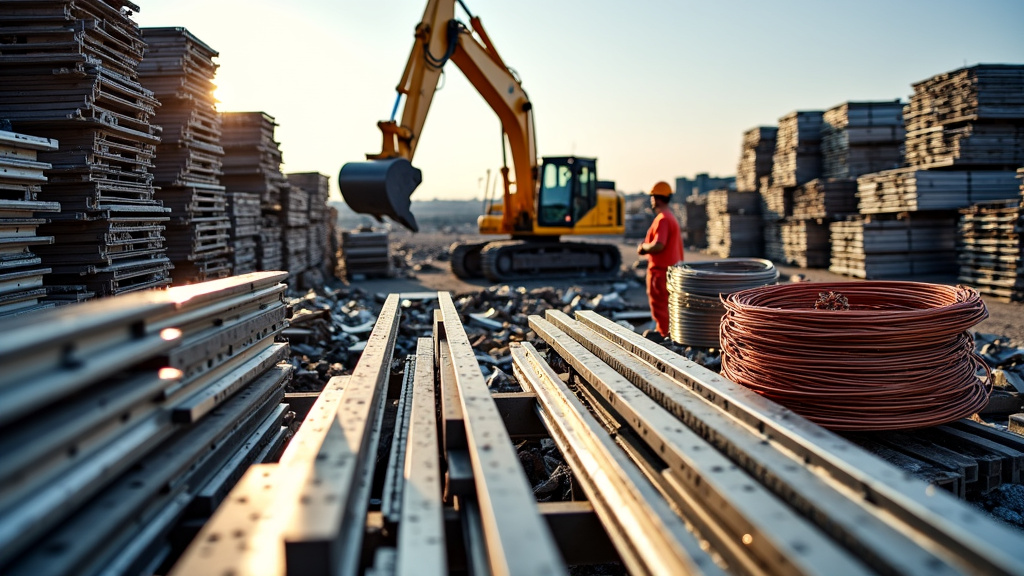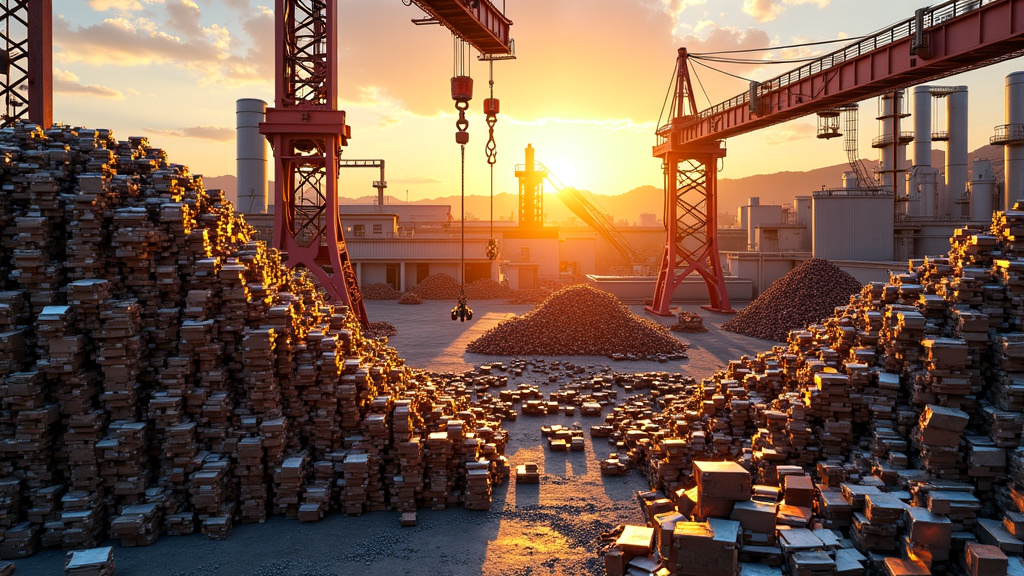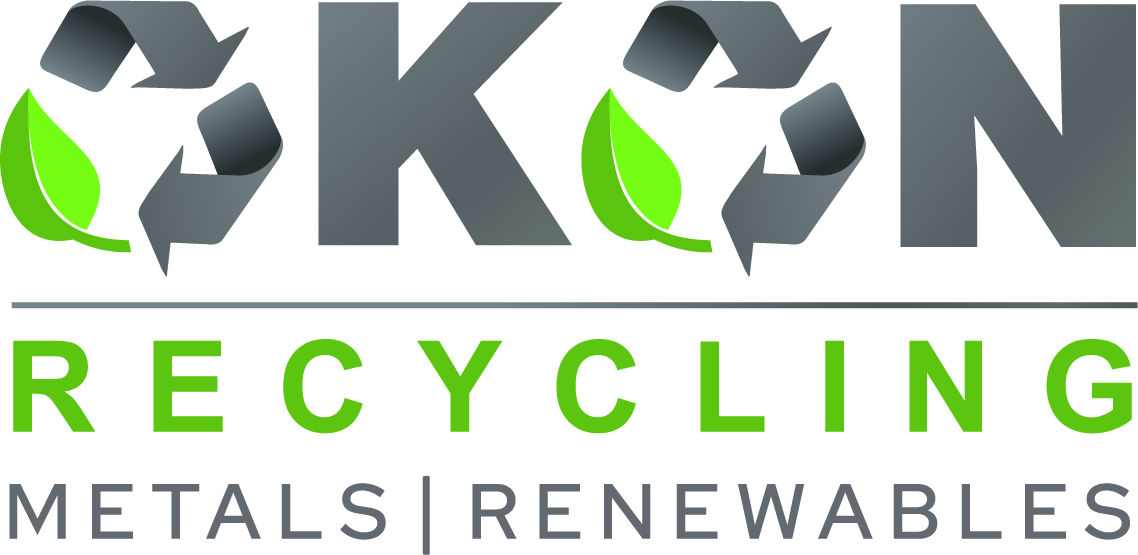5901 Botham Jean Blvd, Dallas, TX 75215
Understanding Metal Scrap Value Per Ton: A Quick Guide
April 10, 2025Have you ever wondered what determines the metal scrap value per ton in the rapidly changing recycling industry? This seemingly simple metric influences economies, global trade, and environmental sustainability efforts worldwide.
Metal scrap value per ton is more than just a number—it’s a complex interplay of market forces, technological advancements, and environmental policies. As we explore this guide, we’ll reveal the hidden factors causing scrap metal prices to fluctuate, sometimes defying logic and expectations.
From the bustling scrapyards of major cities to the high-tech recycling facilities turning waste into valuable resources, the journey of scrap metal is both fascinating and vital to our modern world.
Factors Affecting Metal Scrap Value

The scrap metal industry relies on various factors to determine the per-ton value of recycled materials. Understanding these elements is crucial for both sellers and buyers to navigate the market effectively and optimize their returns. Here are the key factors that influence scrap metal prices.
Metal Type and Purity
The type and purity of scrap metal significantly impact its value. Copper, for instance, consistently ranks among the most valuable metals due to its high conductivity and versatility. According to industry experts, copper’s recyclability and demand in electronics and construction keep its prices high.
Aluminum, while less valuable than copper, remains popular due to its lightweight nature and wide applications. Steel, though lower in price, is accepted at nearly all scrap yards because of its ubiquity in manufacturing and construction.
Purity plays a crucial role in determining value. Clean, uncontaminated metals fetch higher prices as they require less processing. For example, bare bright copper wire commands a premium over copper mixed with other materials.
Market Demand and Economic Conditions
Global economic conditions and industry-specific demand significantly influence scrap metal prices. When sectors like construction, automotive, and manufacturing experience growth, the demand for metals rises, driving up scrap prices.
Conversely, economic downturns can lead to decreased demand and lower prices. The 2008 financial crisis, for instance, saw a steep drop in scrap metal prices due to reduced industrial activity.
Emerging technologies also play a role in shaping demand. The rise of electric vehicles, for example, has increased the value of metals used in battery production, such as nickel and cobalt.
Global Trade Policies and Regulations
International trade policies and environmental regulations can have profound effects on scrap metal values. Tariffs, import restrictions, and changes in recycling laws can alter the flow of scrap metal across borders, impacting prices.
For example, China’s National Sword policy, which restricted the import of certain recyclable materials, caused significant disruptions in the global scrap metal market, affecting prices worldwide.
Energy and Processing Costs
The costs associated with collecting, processing, and transporting scrap metal directly affect its market value. When energy prices rise, it increases the cost of recycling operations, potentially lowering the prices offered for scrap metal.
Conversely, if the cost of mining and producing new metals increases significantly, it can make recycled metals more attractive and valuable by comparison.
Seasonal Variations
Scrap metal prices often exhibit seasonal patterns. Spring and summer months typically see increased construction activity, which can drive up demand and prices for certain metals. Winter months may experience a slowdown in some industries, potentially leading to lower scrap prices.
Understanding these seasonal trends can help buyers and sellers time their transactions for optimal value.
By considering these factors, participants in the scrap metal industry can make more informed decisions, whether selling scrap or sourcing recycled materials for production. Staying informed about market trends, global economic conditions, and industry-specific demands is key to navigating the ever-changing landscape of scrap metal valuation.
Current Market Trends in Metal Scrap Pricing

The global scrap metal market is experiencing significant volatility in early 2025, with prices showing a modest recovery of 1.5-2% since the start of the year. This increase follows a turbulent 2024, highlighting the industry’s dynamic nature where prices fluctuate due to a complex interplay of global supply and demand factors.
Recent data from the World Steel Association shows that scrap metal now accounts for approximately 72% of steel production in the United States, underscoring its critical industry role. This increased reliance on recycled materials has intensified the focus on scrap metal pricing trends among manufacturers and traders.
One notable shift is in the Turkish market, a key indicator for global scrap trends. As of February 10, 2025, prices for HMS 1/2 80:20 scrap in Turkey have risen by 1.7% to $355 per ton, reversing the downward trend seen in January. This reversal signals potential market stabilization, though experts caution that volatility may persist.
Factors Influencing Price Fluctuations
Several key factors are driving current price trends in the scrap metal market:
- Industrial Production Rates: The manufacturing sector’s recovery in major economies has led to increased demand for scrap metal, pushing prices upward.
- International Trade Policies: Recent changes in tariffs and trade agreements have altered scrap metal flow across borders, impacting regional price disparities.
- Supply Chain Disruptions: Ongoing logistical challenges, including shipping container shortages, have created supply bottlenecks, contributing to price volatility.
Regional Variations in Scrap Metal Pricing
The scrap metal market exhibits significant regional differences, reflecting local economic conditions and industrial activity:
In the United States, scrap prices have shown resilience, with a 4.3% increase since early 2025, reaching $330.5 per ton on the East Coast. This rise is attributed to strong domestic demand and weather-related supply disruptions.
Conversely, China’s scrap market has experienced a 4.5% decline, with prices dropping to $325.8 per ton. This downturn is largely due to weakened demand in the country’s steel industry and high inventory levels.
Europe has seen a gradual price increase, with analysts predicting that scrap prices will remain within the $350-360 per ton range in the short term, subject to fluctuations in steel demand and supply chain constraints.
Future Outlook and Market Predictions
Industry experts anticipate that scrap metal prices will remain firm or gradually increase throughout 2025. However, potential economic slowdowns in major markets could introduce further volatility. Key factors to watch include:
- Global infrastructure and construction project expansion
- Inflation control and currency stability in major economies
- Implementation of new environmental policies and trade regulations
- Geopolitical tensions affecting global supply chains and scrap exports
As the steel industry continues to adapt to economic shifts, environmental policies, and geopolitical influences, the scrap metal market is likely to remain a critical area of focus for industry stakeholders. Those able to navigate these complex market dynamics will be best positioned to capitalize on the opportunities presented by the evolving landscape of metal recycling and production.
For the latest updates on scrap metal pricing and market trends, industry professionals can refer to resources such as the World Steel Association and regional metal recycling associations.
Environmental Impact of Metal Recycling

Metal recycling is not just about profit; it is a cornerstone of environmental conservation. Recycling scrap metal provides significant benefits that extend through our ecosystems and atmosphere, far exceeding its monetary value.
Consider this statistic: recycling steel saves 72% of the energy needed for primary production. That’s equivalent to 4,697 kWh per tonne—enough to power an average home for months.
Energy Conservation: Powering a Greener Future
The energy savings from metal recycling are remarkable. Recycling aluminum, for example, conserves 95% of the energy required to produce new aluminum from raw bauxite ore.
This effort is about fundamentally changing how we power our world. By reducing energy consumption in metal production, we make significant strides in combating climate change.
For instance, the energy saved by recycling one aluminum can could power a television for three hours. Multiplying that by the billions of cans recycled annually highlights this impact’s magnitude.
| Metal | Energy Savings (%) |
|---|---|
| Aluminum | 95% |
| Copper | 85% |
| Steel | 72% |
| Nickel | 90% |
| Zinc | 76% |
| Lead | 99% |
| Tin | 99% |
Greenhouse Gas Emissions: A Breath of Fresh Air
Metal recycling plays a crucial role in reducing greenhouse gas emissions. Using recycled steel instead of virgin ore reduces CO2 emissions by 58%.
For perspective, in 2018, recycling 94 million tonnes of steel scrap in the EU saved 157 million tonnes of CO2, equivalent to the emissions from all cars in France, Great Britain, and Belgium combined.
This reduction is a tangible contribution to cleaner air and a more stable climate. Every piece of recycled scrap metal brings us closer to a healthier planet.
Resource Preservation: Safeguarding Earth’s Treasures
The most profound impact of metal recycling is its role in preserving our planet’s finite resources. Mining virgin metals takes a heavy toll on landscapes, ecosystems, and water resources.
Recycling one tonne of steel saves 1.4 tonnes of iron ore, 0.8 tonnes of coal, and 0.3 tonnes of limestone. It’s not just about saving resources but protecting them—forests remain standing, habitats stay intact, and water sources remain unpolluted.
This conservation extends the lifespan of our natural resources, ensuring future generations have access to the materials they need. It is a powerful form of intergenerational equity.
The Future of Metal Scrap Recycling

The growing environmental consciousness among consumers and stricter regulations are driving the industry forward. As sustainability becomes a priority for businesses across sectors, the demand for recycled metals is set to increase. This trend presents an exciting opportunity for those ready to embrace innovative recycling practices and technologies.
Looking ahead, we can envision a world where metal scrap recycling plays a crucial role in conserving natural resources and reducing carbon emissions. The potential for positive impact is immense, but realizing this potential requires collective effort and forward-thinking partnerships. By working with experienced recyclers at the forefront of technological advancements, businesses and individuals can contribute to a more sustainable future.
As we approach this new era in metal recycling, making informed choices is more important than ever. The decisions we make today will ripple into the future, influencing not just our immediate environment but the world we leave for generations to come. To learn more about how you can be part of this exciting future in responsible metal recycling, contact Okon Recycling at 214-717-4083.
